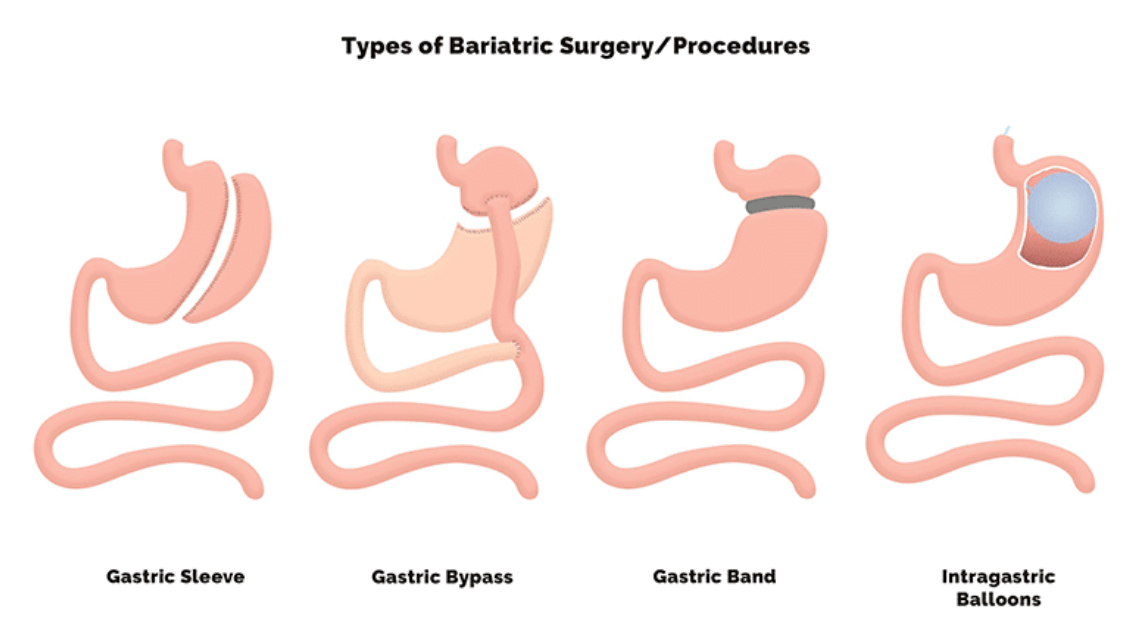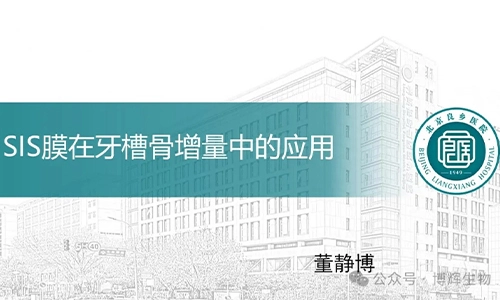There are four main types of bariatric procedures currently : surgeries including gastric sleeve, Roux-en-Y gastric bypass, gastric band, and Non surgical including intragastric balloons.

Please check our list of common FAQs. If you cannot find an answer to your query, please contact BIOSIS HEALING via the contact form on this website and we'd be happy to help.
There are four main types of bariatric procedures currently : surgeries including gastric sleeve, Roux-en-Y gastric bypass, gastric band, and Non surgical including intragastric balloons.

Bariatric procedures: laparoscopic sleeve gastrectomy (LSG), laparoscopic Roux-en-Y gastric bypass (LRYGB), and biliopancreatic diversion, as well as hepatic and pancreatic resection. Thoracic procedures: wedge resection and lobectomy,may include video assisted thoracic surgery (VATS) or open procedures.
We use the pig source because it is closer to human tissue, with better bio-compatibility than bovine, etc, and reduces rejection. This material is safe with great hydrophilicity, easily absorbed by the body.
From the production process, we have removed the DNA and immunogeon clearance over 99.5%. It means that we have removed all characteristics of the pig completely, only keep the ECM graft.
With the advancement of new technology, the thinking of Muslims is also improving. They pay more attention to their health, health comes first, and SIS material retained 43% growth factor which helps fast wound healing and new tissue regeneration.
Vidasis ® reinforcement | Reinforced Reload with Tri-Staple™ Technology | GUNZE Neoveil™* Tubes | GORE®* SEAMGUARD®* | Baxter Peri-Strips®* | COOK®* Biodesign® | |
Biological | √ | √ | √ | |||
Absorbable | √ | √ | √ | √ | ||
Available in 45 mm & 60 mm | √ | √ | √ | √ | √ | √ |
Added thickness <0.4 mm | √ | √ | ||||
No gel required | √ | √ | √ | √ | ||
growth factor | √ | √ | ||||
Anti-bacteria | √ | √ | ||||
Ante-adhension | √ | √ |
What's the advantages with the staple line reinforcement VS non-reinforcement:
Reduces acute bleeding at the staple line when compared to non-buttressed reloads on small bowel
Provides a higher leak pressure point when compared to non-buttressed reloads in in-vivo canine bowel
Lowers rate of air leaks at the staple line vs. non-buttressed reloads at 40 mmHg
Save Surgery time between 7-10 minutes of OR time per procedure
100% absorbable buttress material allows tissue in-growth, reduces the patient hospital stay
Potential reduction in waste resulting in cost savings
Thickness is 0.14mm only for each, thinnest material on the market, easy to pass the 12mm trocar.


By reducing post-op leaks and bleeding, the reinforcement may contribute to shorter hospital stays, decreased costs and lower morbidity rates
With reinforcement, no need to sew or clip the staple line, save the surgery time of 10 minutes and disposable accessories.
Financial impact of treating post-operative leaks
Reduce air leakage in thoracic surgery
Prolonged air leak, defined as air leak lasting more than 7 to 10 days after thoracic surgery around 15%-25%, is often associated with pain owing to the chest tubes, with a higher risk for infections due to immobilization and is a major limiting factor for discharge from the hospital, with reinforcement reduced to 5.7% ²

From: Nicholas Drahush,et al. Standardized Approach to Prolonged Air Leak Reduction After Pulmonary ResectionAnn Thorac Surg. 2016;101(6):2097-101.
Biosis reinforcement works with all brands of surgical staplers including Medtronic type and Johnson & Johnson type, and all other US and EU type of surgical staplers.
The most popular kit size is 60mm for sleeve gastro surgery, the size is SLR-ECP-S60T ( Medtronic type say“M”) and SLR-ECP-S60 (Johnson & Johnson type say “J”), each kit includes two reinforcements, one for Anvil, another one is for Cartridge. Our product range also includes specialized tools such as the disposable foreskin stapler, which offers a convenient solution for circumcision procedures. Additionally, the disposable hemorrhoids stapler provides a reliable option for hemorrhoid surgery.


The principle is that based on the different migration speeds of various types of tissue cells, a barrier membrane is placed between soft tissue and bone defects to establish a biological barrier, creating a relatively closed tissue environment to prevent connective tissue cells and epithelial cells from entering the bone defect area. Precursor osteoblasts with potential growth ability and slow migration speed are allowed to enter the bone defect area preferentially and grow advantageously. At the same time, dental bone graft membrane protect the blood clot, reduce pressure, and achieve reparative bone regeneration in the defect area.
In conventional oral implants, insufficient bone stock is a common situation. Commonly used bone augmentation techniques include guided bone regeneration, alveolar bone splitting (local alveolar ridge augmentation, alveolar ridge augmentation). Surgery), maxillary sinus floor lifting, external bone grafting, distraction osteogenesis, etc. Secondly, periodontal and alveolar bone soft and hard tissue repair treatments act as a physical barrier to prevent filling materials from moving and guide bone regeneration.
Preserve the extraction socket site;
Periodontal-guided tissue regeneration (GTR)
Maxillofacial surgery soft tissue regeneration
Otolaryngology and pharyngeal soft tissue regeneration surgery
Yes, it is 100% degradable and absorbable. In actual application, it usually takes more than 2 months for implant surgery to be blocked. Open for 1.5-2 months.
Different from other bovine pericardium and dermal materials, the degradation cycle of this type of product is more than 3 months to 6 months
In practical applications, the longer the barrier time, the better. For details, please refer to the picture and video introduction of Bioguide. In our research, we found that the absorption time of Bioguide is about 8 weeks, while our products are more than 8 weeks.

Clinical expert papers describe that when conducting guided bone regeneration, the barrier function of the barrier membrane must continue at least until the temporary matrix and woven bone are formed. In most cases, barrier function lasts 7-14 days. Optimum barrier function is to maintain sealing properties until the wound has healed - a process that normally takes about 2 weeks.
According to the clinical needs of doctors, this product can be applied to both buried healing and open healing. The advantages of open healing are as follows: no flap is required during the operation, and the mucogingival junction is well preserved.
Our oral membrane has very good adhesion to bone tissue after being moistened, and titanium nail fixation is usually not required. Fixation can also be performed under special circumstances (for example, if the bone graft area is relatively large, titanium nail fixation is recommended).
Can't. Autoclaving or high-temperature sterilization irreversibly destroys the collagen structure, changing the physical properties of the membrane and breaking easily like parchment rolls. In addition, repeated disinfection of oral membranes is not approved. Therefore, it is prohibited to re-disinfect oral membranes by any method.
Biosis oral membrane has a unique double-layer membrane structure, has good bone formation ability and predictable efficacy, and effectively reduces complications during the wound healing process. Biosis oral membrane is a naturally freeze-dried biofilm that has a significantly lower incidence of wound dehiscence than synthetic cross-linked membranes. Implanted into the body to quickly guide blood vessels to grow in; guide bone regeneration for better results. The cross-linked oral membrane has no bioactive substances and cannot be completely degraded. It has more complications because the cytotoxicity of the cross-linking agent will prevent cells from entering the material. Internally, vascular endothelial cells, fibroblasts, and inflammatory cells cannot enter the interior of the material and only stay on the surface of the material, developing into a chronic inflammatory reaction, forming permanent fiber wrapping, erosion, calcification, inflammation and other adverse reactions. This fiber wrapping becomes bacterial growth.
Our oral film has a double-layer film structure, with a dense layer and a loose layer. The dense layer provides better cell isolation and prevents epithelial cells from growing into bone defect areas. If used with the rough side facing the soft tissue, the bone cell fusion process will be slowed down. There is no need to remove and reposition the membrane (titanium mesh, etc. require a second surgery to remove).
Very few of the global competing products are double-sided.Most of them have a single-sided structure, that is, the front and back are the same. They are advertised as being able to guide GTR and GBR surgeries, and of course we can too.
Our oral membrane is made from the small intestinal submucosal tissue of pig. Allergic reactions and inflammatory reactions of the tissue cannot be completely ruled out, but they are extremely rare.
Inflammation is a common complication that can occur with any surgery. A large number of studies have confirmed that the Biosis oral membrane has good biocompatibility. Because the Biosis material itself has host defense peptides, it has the effect of inhibiting infection. As new blood vessels and materials grow in, bacteria are removed, so it is very beneficial to the oral environment.
Stored at room temperature, valid for 2 years.


